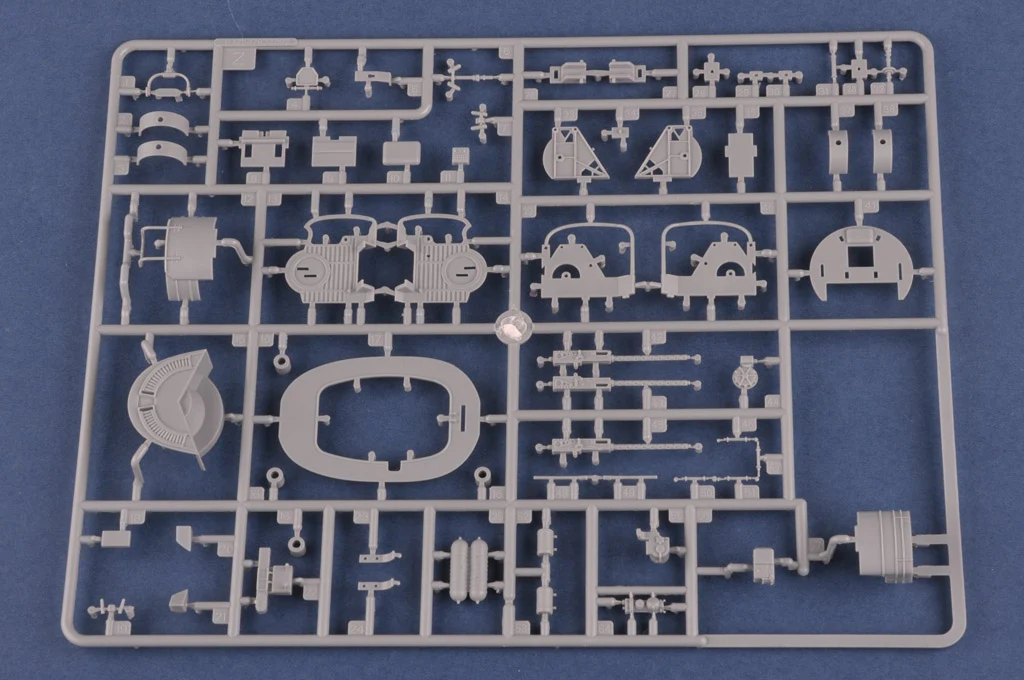Hobbyboss takes us from one extreme of aircraft modelling to another this month - from a diminutive JASDF T-4 trainer in 72nd scale to the second release of their massive B-24 Liberator in 32nd scale. We have the boxart, colours, decals, plastic &everything else inside the boxes of their two new releases for this month...
Hobbyboss' July new Item Preview
J.A.S.D.F T-4 Trainer
Model no: #87266
1:72nd scale
In September 1981 the Japanese Defence Agency selected Kawasaki's KA-851 design as the winning contender for development of a new intermediate flying trainer. The new type would replace Fuji T1F (T-1) and Lockheed T-33 aircraft in service with the Japanese Air Self-Defence Force (JASDF) in the late 1980's.
Emphasis was placed on high subsonic manoeuvrability. Detail design was finalised by the end of 1983, and the construction of six XT-4 prototypes began in the spring of 1984. Power is provided by two F3 engines developed by IHI. As prime contractor, Kawasaki is also responsible for final assembly and test. All four flyable prototypes had flown by July 1986; the first prototype taking to the air on 29 July 1985. Successful trials led to full-scale production with the first production T-4 flying in June 1988. Deliveries began three months later to the 31st and 32nd Flying Training Squadrons of the 1st Air Wing at Hamamatsu. Small numbers of T-4's are attached to the instrument/communications flights of most operational squadrons, as well as the flights of regional headquarters and operational group flights for liaison duties. Nine T-4's form the mount of the Blue Impulse national aerobatic display team.The T-4 features a license-built Kaiser head-up and three external hard points (one under fuselage and two wing points) that allow it to have a secondary light attack tasking as well as a weapons training role. Kawasaki has proposed an enhanced version as possible replacement for the Mitsubishi T-2 in the dedicated armament training role. The JASDF has a requirement for 200 T-4's, and had received around 180 examples by 2001.
Model Length: 180.3mm Wingspan: 139.7mm
Total of 5 sprues
The kit consists of 40 parts
includes 1 clear part
"in flight" stand included
B-24D Liberator
Model no: #83212
1:32nd scale
The Consolidated B-24 Liberator was an American heavy bomber, designed by Consolidated Aircraft Company of San Diego, California. Its mass production was brought into full force by 1943 with the aid of the Ford Motor Company through its newly constructed Willow Run facility, where peak production had reached one B-24 per hour and 650 per month in 1944. Other factories soon followed. Often compared with the better-known B-17 Flying Fortress, the B-24 was a more modern design with a higher top speed, greater range, and a heavier bomb load. However, it was also a more difficult aircraft to fly, with heavy control forces which let do poor formation-flying characteristics - important for a bomber that relied on mutual protection for survival. Popular opinion among aircrews and general staff tended to favour the B-17's rugged qualities above all other considerations in the European Theatre. The placement of the B-24's fuel tanks throughout the upper fuselage and its lightweight construction, designed to increase range and optimise assembly line production, made the aircraft vulnerable to battle damage. The B-24 was notorious among American aircrews for its tendency to catch fire. Moreover, its high fuselage-mounted wing also meant it was dangerous to ditch or belly land, since the fuselage tended to break apart. Nevertheless, the B-24 provided excellent service in a variety of roles thanks to its large payload and long-range. The B-24's most famous mission was the low-level strike against the Ploesti oil fields, in Romania on 1 August 1943, which turned into a disaster due to attack waves getting out of sequence.
Model Length: 675.9mm / Wingspan: 1049.5mm
Total Plastic Parts 560+
Total Sprues 24 sprues , tires and undercarriage
More Features - Detailed fuselage&wing w/accurate design
- Finely detailed cockpit,gear cabin,
- Grooved rubber tires
- PE parts included
These two new kits are available from Hobbyboss' Distributors Worldwide...



































